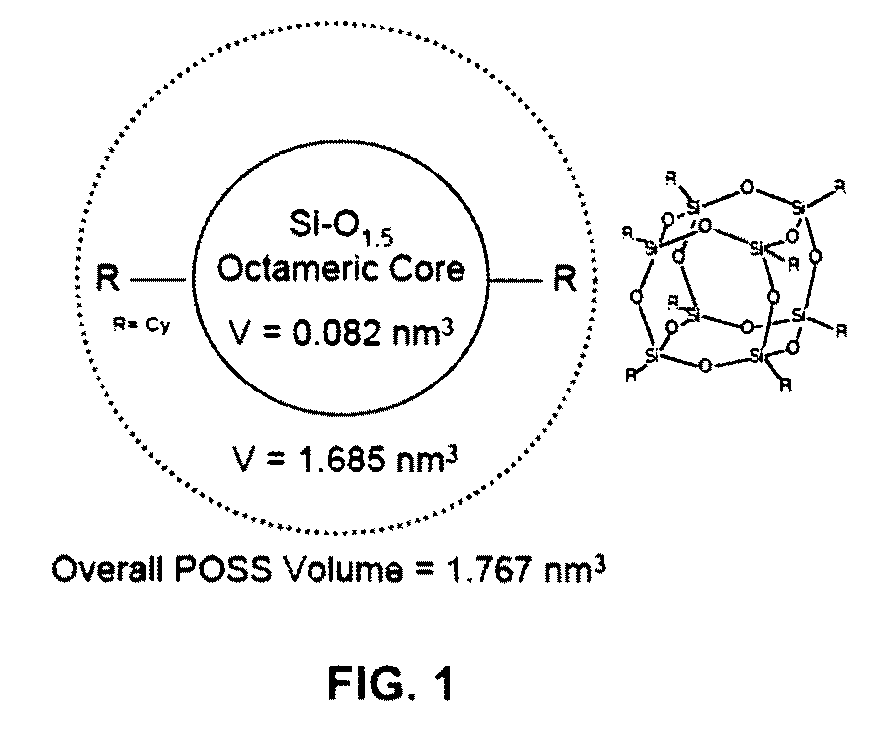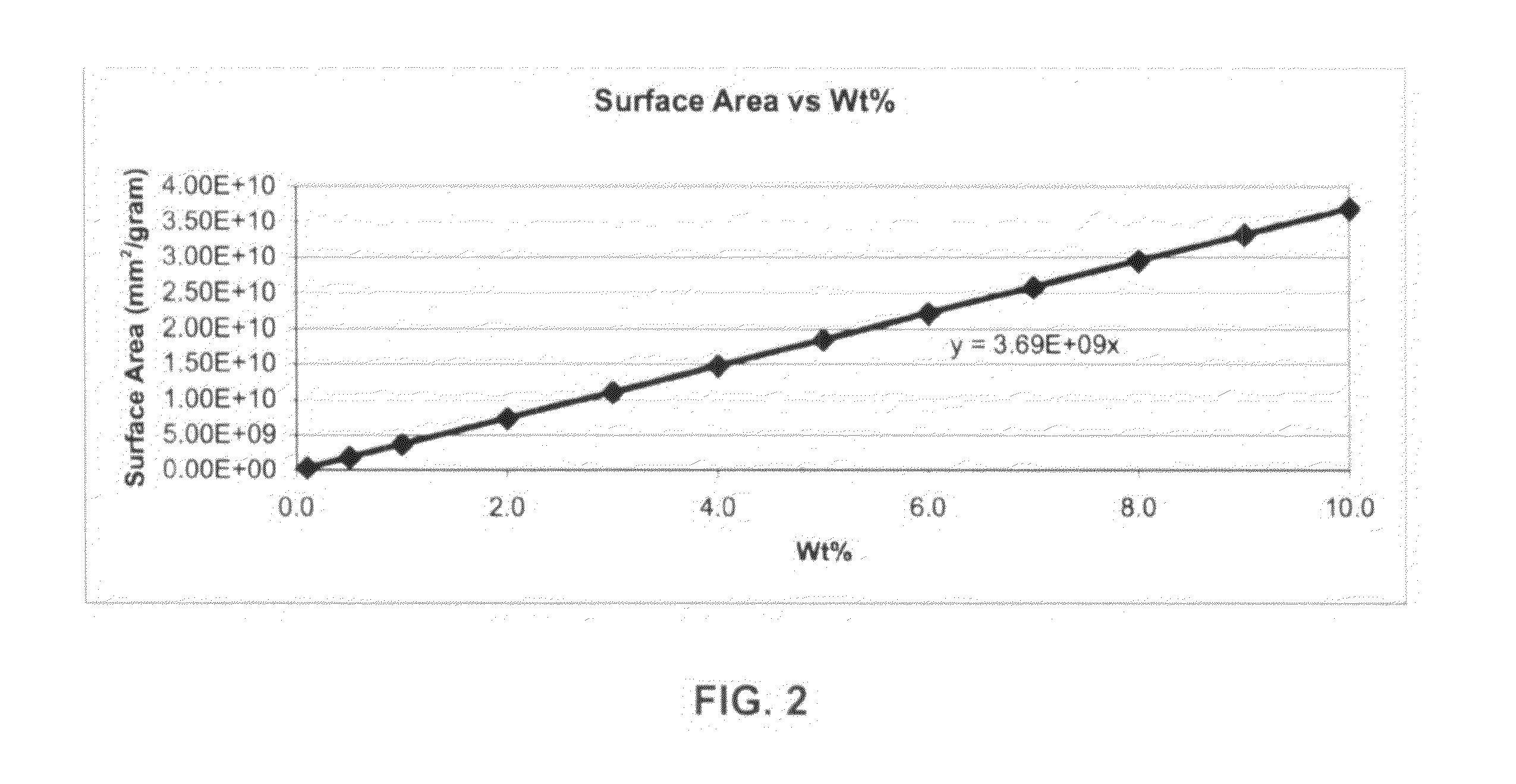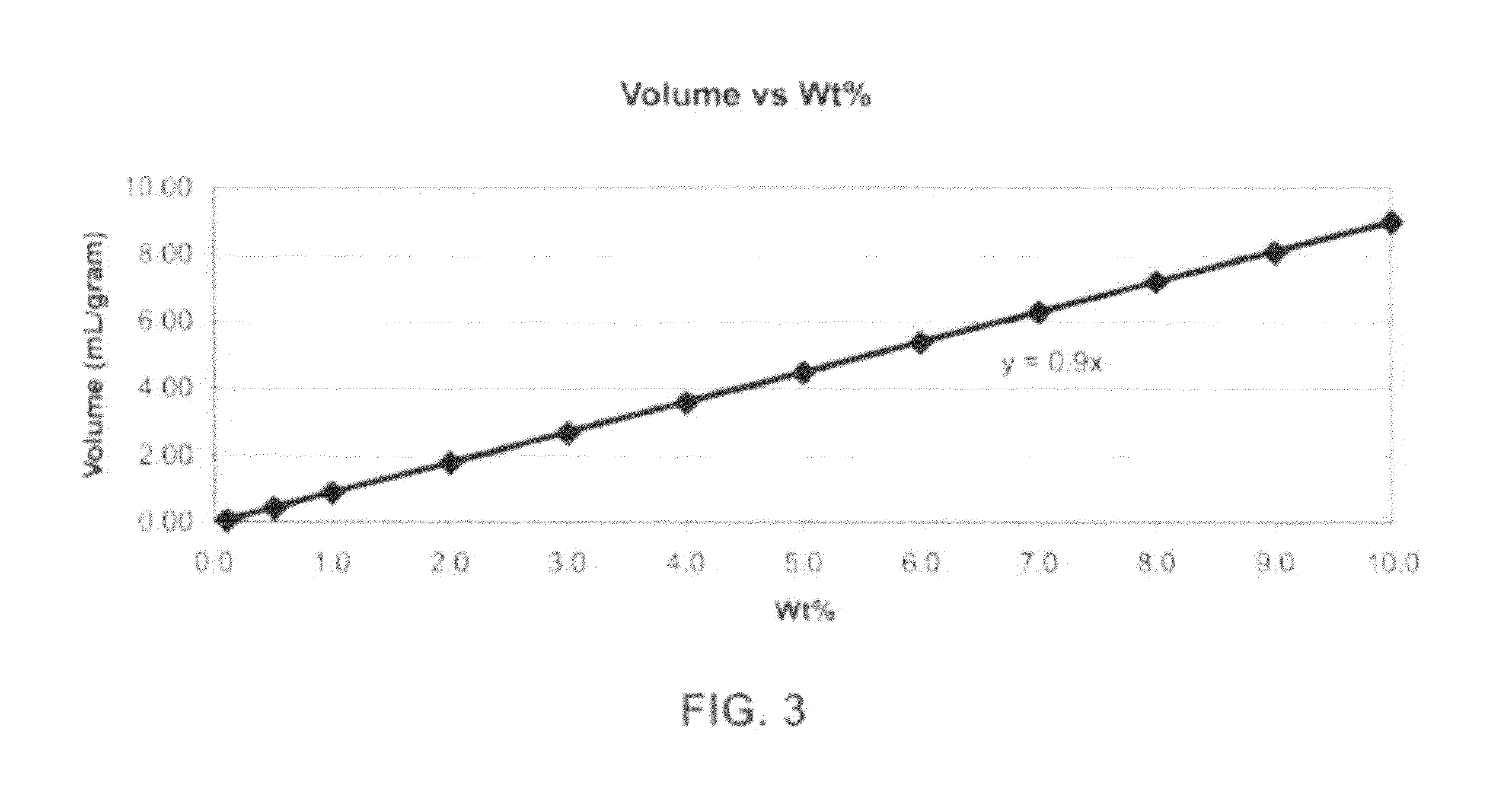Fluorinated POSS as alloying agents in nonfluorinated polymers
a technology of fluorinated polymers and alloying agents, which is applied in the direction of plastic/resin/waxes insulators, organic insulators, nanotechnology, etc., can solve the problems of limiting the ability of conventional fillers to access the free volume in a polymer system, prior art suffers from process complexity, and reduces the surface energy and contact angle of super hydrophobic materials. , to achieve the effect of favorable impacting a multitude of physical properties
- Summary
- Abstract
- Description
- Claims
- Application Information
AI Technical Summary
Benefits of technology
Problems solved by technology
Method used
Image
Examples
examples
General Process Variables Applicable to all Processes
[0039]As is typical with chemical processes there are a number of variables that can be used to control the purity, selectivity, rate and mechanism of any process. Variables influencing the process for the incorporation of nanostructured chemicals (e.g. POSS / POS etc.) into plastics include the size and polydispersity, and composition of the nanostructured chemical. Similarly the molecular weight, polydispersity and composition of the polymer system must also be matched with that of the nanostructured chemical. Finally, the kinetics, thermodynamics, and processing aids used during the compounding process are also tools of the trade that can impact the loading level and degree of enhancement resulting from incorporation of nanostructured chemicals into polymers. Blending processes such as melt blending, dry blending and solution mixing blending are all effective at mixing and alloying nanostructured chemical into plastics.
[0040]Wate...
PUM
| Property | Measurement | Unit |
|---|---|---|
| length | aaaaa | aaaaa |
| length | aaaaa | aaaaa |
| sizes | aaaaa | aaaaa |
Abstract
Description
Claims
Application Information
 Login to View More
Login to View More - R&D
- Intellectual Property
- Life Sciences
- Materials
- Tech Scout
- Unparalleled Data Quality
- Higher Quality Content
- 60% Fewer Hallucinations
Browse by: Latest US Patents, China's latest patents, Technical Efficacy Thesaurus, Application Domain, Technology Topic, Popular Technical Reports.
© 2025 PatSnap. All rights reserved.Legal|Privacy policy|Modern Slavery Act Transparency Statement|Sitemap|About US| Contact US: help@patsnap.com



